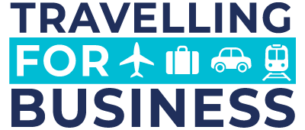Staying in contact with work, family and friends while flying has always been a challenge, and finding an airline that accommodates fast, high-quality internet access no easy task.
However, 2025 appears to be the year when this will change, with several airlines including Air New Zealand and Air France announcing free high-speed internet available to passengers this year, some even allowing video calls from your seat.
So, which are the most tech-friendly airlines for travellers in 2025? Fortunately, airport parking specialist Airport Parking and Hotels (APH.com) has created a handy guide comparing the in-flight Wi-Fi connectivity available on 10 long-haul airlines. Available at https://www.aph.com/airlineelectronics, the guide highlights Wi-Fi plans, internet usage, charging availability and instructions on how to connect inflight helping travellers plan ahead for their journey.
Onboard internet costs vary across all airlines, with the top choices including Air New Zealand offering free Wi-Fi for all passengers on both international and domestic Wi-Fi equipped flights and Qatar Airways providing Student Club Members with complimentary unlimited Wi-Fi. British Airways offers Messaging Packages starting from £2.99 – £4.99 for non-members on long-haul flights, while Air Canada has a pricey £5 pass for one hour, one-way. It’s good news for passengers flying in Premium classes or as a Frequent Flyer member however who often receive complimentary Wi-Fi, ranging from an hour to the entire flight.
When it comes to on-demand content choices, airlines such as Air France, Cathay Pacific and Delta Air Lines are equipped with a large choice in on-board entertainment, catering to diverse passenger needs with features ranging from curated playlists to interactive maps, live sports, and children-friendly options. Emirates and Qatar Airways provide expansive libraries of on-demand content, live TV, and music, while Turkish Airlines and Singapore Airlines offer unique platforms like My Music Planet and KrisWorld.
Luckily most airlines now provide USB ports or a power outlet as standard on passenger seats. However, passengers should check ahead as some airlines, such as British Airways, require an adapter for British plugs and it’s not possible to charge a Macbook in Economy seats when flying with Emirates.
Phones, tablets and laptops are permitted on all airlines as long as set to airplane mode first before then connecting to the airlines’ Wi-Fi when the aircraft’s reached the right altitude. Larger devices, however, typically need to be stowed away during take-off, turbulence and landing. Once in airplane mode, passengers can access Wi-Fi or purchase a pass by connecting to the airline’s local network and following the on-screen instructions. Some carriers, like Qatar Airways, allow passengers to switch Wi-Fi between devices and even pause the internet session when not actively browsing, saving data and offering a more flexible and user-friendly experience.
Nick Caunter, Managing Director of Airport Parking and Hotels (APH.com), said, “We’re happy to see more airlines will be providing fast, reliable Wi-Fi to those passengers who want to stay in touch. The APH guide provides flyers with a clear comparison of the different rules for using in-flight electronics and services, and we hope enables savvy travellers to plan ahead for a tech-friendly flight.”


